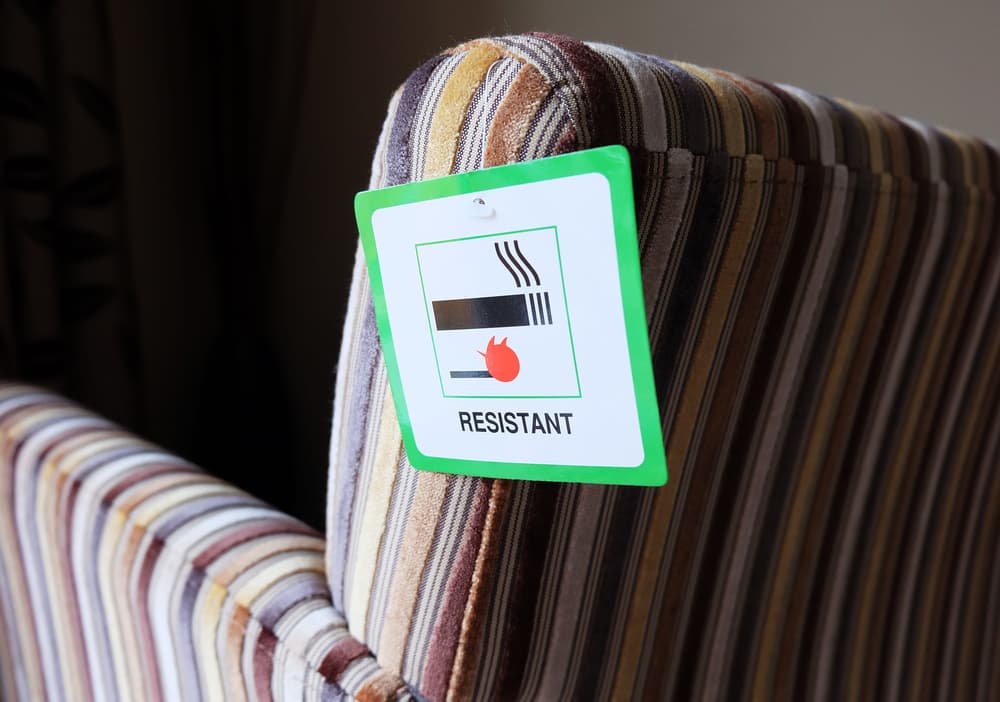What Is Fire Retardant Spray?
A fire retardant spray may seem pretty much self-explanatory, but it’s actually a beautiful intersection of chemistry and safety. The most often used flame retardants are those that contain bromine, while numerous other varieties can relate to several chemical compounds. In short, fire retardant sprays are used to prevent fires and delay their spread.
They play a crucial role in ensuring the safety of our loved ones and our financial interests, and can be found in a wide variety of products, from construction supplies to textiles and electronics. Because of their pervasiveness, it's helpful to have some background knowledge of fire retardants.

Do Fire Resistant Sprays Stop Fires?
In reality, nothing can stop a fire, right? Correct, but every fire starts somewhere. While there is no foolproof way to prevent a fire, a fire-resistant spray can greatly lower the rate at which it spreads and even prevents the surface from catching fire in the first place.
If you live in a wildfire-prone area, you may already know that hot ashes blowing onto neighboring properties contribute greatly to fire spread. When homeowners use fire retardants on their properties, heated ashes are much less likely to ignite anything they fall on.
How Do Fire Retardant Sprays Work?
When exposed to fire, a material that has been treated with fire retardant sprays forms a carbonized shield that protects the area. As a side effect, the material will become black, but more crucially, it will be far more difficult for a fire to spread, which will limit total damage and the life-threatening risk. It also provides you more time to react and put out the fire.
How Long Do Fire Prevention Sprays Last?
There are various fire prevention sprays available, each with a varied shelf life and application methods. While some sprays are intended for long-term outdoor usage, others are intended to be sprayed in the moments before a fire threatens your home.
The ones designed to safeguard your property from raging fires don’t survive as long as the ones used for routine maintenance. Before buying a flame retardant spray, be sure to familiarize yourself with the product's intended use and all safety precautions listed on the package.
Fire retardants are meant to remain in the materials containing them to preserve their effectiveness. It's possible they'll survive 50 washes in treated textiles, but they'll lose their usefulness beyond that. If a fire retardant gets on your skin, you can remove it with mild soap and water.
How Safe Are Fire Retardant Sprays?
Flame retardants are scrutinized, as with any chemical used to keep people safe. In fact, the Environmental Protection Agency (EPA) of the United States must review any newly developed flame retardant chemicals, which means that the data is continually being updated.
During its evaluation of data on fire retardant chemicals, the EPA discovered approximately 50 fire retardant chemicals that are unlikely to endanger human health. However, the dangers posed by flame retardants to human health change depending on the specific chemical and the intended use. When working with chemicals, you must take all necessary precautions and follow the instructions for use.

Check Out RDR Technologies for All the Latest Fire Retardant Chemicals
Now that you know what a fire retardant spray is, visit RDR Technologies to see the latest spray technology. For your convenience, we have partnered with the leading manufacturers of fire-retardant chemicals to offer you a one-stop shop for fulfilling all of your NFPA standards. In addition to manufacturing our BanFire brand of sprays, powders, and paint formulae, we also provide various outstanding products from other companies.
Read Next
What Can You Put on Wood Substrate to Make it Fire Resistant?
Learn Why Are Christmas Trees Sprayed With Fire Retardants
Is It Possible to Make Wood Fire Resistant?
Fire vs. Materials: Is Leather Fire Retardant?
Fire vs. Materials: Is Polyester Flame Retardant?
Life-Saving Materials 101: What Fabrics Are Flame Retardant?
Recent Posts
-
How to Stop Wildfires
Wildfires pose a significant threat to both human life and the environment, causing extensive damage …Jul 10th 2024 -
How Often Do Wildfires Occur
Wildfires are a natural phenomenon that have shaped landscapes for millions of years. However, in re …Jul 10th 2024 -
Where Do Wildfires Occur?
Wildfires, powerful and often destructive natural events, occur worldwide, fueled by various factors …Jul 10th 2024




